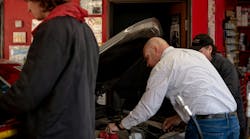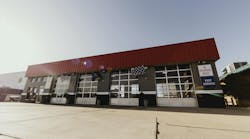In my time as a trainer traveling across the country, one of the things I constantly get asked for is a training schedule. People want to have a training schedule or checklist to ensure every employee gets the proper training. However, before we can start to train, we have to start with a policy and procedure guide — complete with job descriptions.
Before an employee can be trained, they need to know what the company policy is and how they are supposed to service customers’ vehicles. The vehicle manufacturers have made the process of removing the drain plug and replacing the oil filter a pretty straightforward and simple process. What employees really need to be trained on is everything else.
There are as many different ways to operate, as there are quick lube operators. So, you need to determine how you want your employees to do things. Many shop owners will tell you training a new employee with no automotive experience is often easier than training an employee with a lot of experience. Why? Because we all have our methods of doing things, and sometimes the experienced employees bring with them bad habits that you would like to keep out of your shop.
There are a lot of ways to be successful. Once you have found the formula that works for you, it is important to put it in writing and build on it. This is the foundation of your business — your policy and procedure manuals. Before you embark on a training program, make sure this piece of the puzzle is in place. (And don’t forget job descriptions for each position in the shop.) The first hurdle of your new training program will be your current employees. Training, or retraining, existing employees has its own challenges. However, not having current employees performing to your expectation can be a disaster when trying to implement a new program. You don’t want current employees telling your new recruits, “We don’t do it like that.” To head off this problem, here is a suggestion: Get input from your staff. Make them a part of the solution instead of the problem. Discuss your “new” training program with them, and include them in the new mandates. Once your current employees are on board with the new training initiative, it may be time for some new employees.
Think about what types of positions you have in your shop. Have you identified the gaps in workflow and what type of employee you want? Do you have a dress code? Are there special requirements or certifications you want your new employee to achieve? Are you hiring for a specific job, or do you want someone who is capable of performing several duties? It is important to start out with an idea of the type of employee who will meet your needs.
For instance, if you are looking for a person who is upbeat and has a positive attitude to work with your customers, don’t consider the introvert who won’t look at you during the interview. However, that same introvert may be perfect for the lower bay because you do not have to expect them to interact with customers. If you know your minimum requirements for a new hire, starting with an individual who meets those requirements makes the rest of the training go smoothly. Training starts with the application. Before you can train the perfect technician, you need to make sure you hire someone who can be the perfect technician.
A training schedule starts with a policy that states who you are and what your expectations are. The policy is the law of the land for your operation. The other piece is a procedure guide — a step-by-step guide to how you want the cars serviced. Another thing that is helpful in getting new employees up to speed is a general job description of each position in your shop. This will help clarify who is performing what functions and in what order they need to be performed.
The last step to setting up a training schedule is making sure you have the right people in the right positions. After all, a well-trained employee is worth their weight in gold, while an untrained employee is a greater liability than an unprotected pit opening.





